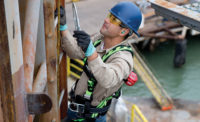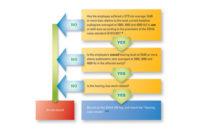
There are many good reasons to hire veterans. They have proven their ability to quickly learn new tasks. They are disciplined and understand teamwork. They are proven leaders who can perform under pressure and have triumphed over adversity. They bring high tech skills, as well as respect for procedures and accountability. And, more important for safety professionals, they have integrity, initiative, and know the importance of health and safety standards and accountability.
Many military veteran employees are now returning to the workforce after being called to active duty; others are new hires just coming out of the military. Safety professionals can help make the transition to civilian life successful.
In 2007, the WorkPlace Warrior Think Tank focused on the long-term issue of soldiers returning or integrating into the workplace noting, “The medical and disability issues for citizen soldiers require a long-term, comprehensive response by employers in order to retain these valuable employees and benefit from the knowledge, skills, abilities, training, and experience they bring to the workplace.”1
One issue facing veterans returning to or joining the workplace is hearing loss or tinnitus due to the noise hazards of the military. The U.S. Department of Veterans Affairs reports that hearing damage is the most common disability produced by the war on terrorism. In a survey of Army soldiers returning from combat deployments, 25 percent reported experiencing some change in their hearing, dizziness or ringing in their ears. A 2005 study revealed that troops in combat had a 50 percent higher chance of hearing loss than troops who don’t deploy. Over 94,000 military members who served in Iraq and Afghanistan now collect disability for tinnitus or ringing in the ears. And more than 78,000 veterans are on disability for hearing loss, many due to the explosions of powerful roadside bombs, according to the VA.2
Here are some issues to consider.
Baseline audiogram
OSHA standards allow employers up to six months to get a baseline audiogram for new employees (up to one year if using mobile audiometric service providers) but it is always prudent to get a pre-employment audiogram to document the level of hearing upon employment. Reservists who return from active duty should get their annual audiogram as soon as possible. Knowing the employee’s hearing status can also provide information that allows safety managers to take any action to ensure that the employee has the tools and knowledge about hearing conservation to succeed on the job.Even if the veteran’s hearing is still within normal limits, the hazardous noise exposures experienced on the current job add to the cumulative damage of the delicate inner ear structures. And as with all workers, if the worker has some hearing impairment or tinnitus, protection from further damage is critical.
Hearing protection options
According to OSHA and other regulations, employers must provide appropriate selection of hearing protection for workers exposed to hazardous noise. If an employee has some hearing loss, special hearing protection may be needed to both protect hearing and allow situational awareness for safe operations. If a hearing protector provides too much protection, the worker becomes a safety risk — they may not hear warning sounds or critical communications. Fit-testing earplugs can help ensure the right amount of protection from an earplug, and ensure that the worker knows how to insert the earplug appropriately to get that “right fit.” Hearing protectors offering “uniform attenuation” can make speech and other environmental sounds seem more natural than conventional hearing protectors. Electronic hearing protectors can amplify speech and other sounds but also protect from loud sounds.Several hearing protection solutions, including new products, meet the special needs of workers with existing hearing loss, workers who suffer tinnitus, or workers in hearing-critical jobs. These solutions can, of course, be applied for non-veteran workers with hearing loss or tinnitus as well.
Communication/ speech intelligibility
Some jobs are considered “hearing critical,” meaning that the worker must meet certain hearing standards to be hired or retained in that position. Examples include commercial drivers, law-enforcement personnel and fire-fighters but are not limited to these professions. Many jobs have some need for auditory abilities if only to communicate and hear warning sounds. Workers with impaired hearing might benefit from specialized hearing protection that amplifies sound or attenuates noise evenly across frequencies (uniform attenuation). Employers might also consider providing assistive listening devices for meetings and training sessions.Protection from impulse noise
Impulse noise exposures might be especially troublesome as that exposure could bring back memories of explosions. It is vital to be sensitive to that possibility. Double protection — muffs over a well-fit earplug — decreases both the risk of hearing damage and the startle response from this type of noise exposure.Tinnitus
Tinnitus is ringing or buzzing in the ears, and can be present with or without hearing loss. According to the American Tinnitus Association, between 2000 and 2005, the number of veterans with tinnitus disabilities more than doubled, and they believe this is the tip of the iceberg.3 There is promising evidence about treatments to manage tinnitus which include the use of external sound to mask (cover up) the annoying sounds of tinnitus. In a noisy workplace we often (erroneously) go for the highest amount of protection available from a hearing protector. Workers with tinnitus often complain that their tinnitus is worse with hearing protection because the hearing protector has masked the external noise that was making the tinnitus (internal noise) less noticeable. New hearing protection products allow users to plug in MP3 players and other personal audio devices which can be a part of a tinnitus treatment plan. Lower attenuation hearing protectors may also be used so that enough sound is blocked (attenuated) to prevent noise-induced hearing loss but “overprotection” is avoided. Fit-testing of earplugs can help find this appropriate level of protection.Hearing resources for vets
There are resources to help the veteran deal with their hearing loss or tinnitus. Retirees and Active Duty military can get Assistive Listening Devices at cost from several manufacturers. For more info visit:http://militaryaudiology.org/site/2008/11/retiree-assistive- listening-devices-the-rald-program/andhttp:// www.hearingloss.org/veterans/resources.asp.References
1 Carruthers, Marcia and Carol A. Harnett. “Workplace Warriors: The Corporate Response to Deployment and Reintegration,” Disability Management Employer Coalition.http://www.dmec.org/ associations/5959/files/2007_DMEC_Think_Tank.pdf2 Saunders, Gabrielle H. and Susan Griest. “Hearing loss in veterans and the need for hearing loss prevention programs,” Noise and Health (2009).
3 “ATA Promotes More Research to Benefit Veterans with Tinnitus.”http://www.hearinglossweb.com/Medical/Tinnitus/ata.htm

